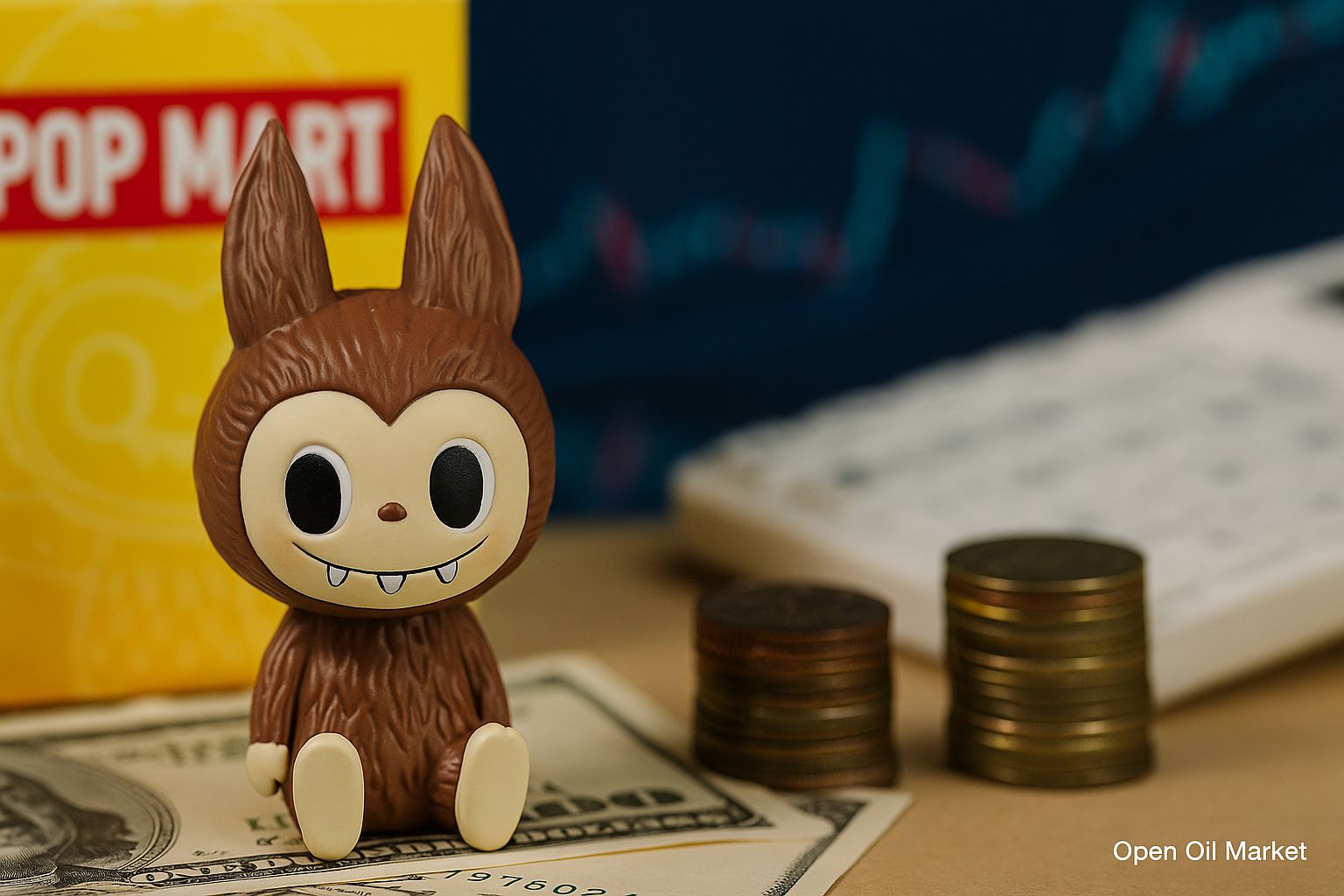
Pop Mart's Market Capitalization Surpasses Gazprom and Tatneft
As of July 2025, the market capitalization of the Chinese company Pop Mart International Group, the producer of popular collectible toys Labubu, has reached approximately $42 billion. This surpasses the valuation of Russia’s largest gas company, Gazprom (ticker GAZP, ~$38 billion), and is significantly higher than the market value of the oil company Tatneft (ticker TATN, ~$18 billion).
The rapid rise in Pop Mart’s value can be attributed to the soaring demand for its products: the company’s shares have skyrocketed over 500% in the past year amid a sharp increase in sales and profits. In contrast, Gazprom’s capitalization has sharply declined in recent years—sanctions and the loss of key export markets have led to a crash in the stock price of the Russian gas giant.
Pop Mart: The Phenomenon of Labubu Toys
Pop Mart International Group was founded in China in 2010 and initially began as a small toy store in Beijing. The company gained fame through its “blind box” concept: collectible figurines are sold sealed, and the buyer does not know which character they will receive. This model stimulates the excitement of collecting and repeat purchases, quickly elevating the brand to a market leader in designer toys.
Pop Mart’s main hit is a series of figurines called Labubu. This funny character with big eyes and a cheeky smile gained viral popularity on social media, particularly on TikTok and Instagram. Labubu figurines have become a cultural phenomenon: they are purchased not only by children but also by adult collectors. Lines formed in stores across Asia and Europe for new releases, and photos and videos featuring these toys spread rapidly online.
Building on its domestic success, Pop Mart is actively expanding into international markets. The company has opened flagship stores in Japan, the USA, and Europe, as well as formed partnerships with major brands—for example, releasing exclusive collections in collaboration with Coca-Cola and the popular manga franchise One Piece. Thanks to successful marketing and a broad sales geography, Pop Mart’s revenue has surged: it has more than tripled over the past six months, with net profit expected to increase by approximately 350% year-on-year in the first half of 2025.
Pop Mart Surpasses Gazprom in Value
The fact that a toy manufacturer has managed to exceed the market value of Russia’s largest energy company reflects a striking contrast in the dynamics of the two businesses. Just a few years ago, Gazprom was valued at over $130 billion; however, since then, its market capitalization has significantly decreased. Conversely, Pop Mart has transformed from a niche retailer into a global company valued in the tens of billions of dollars in a short period.
- Pop Mart — ~$41.5 billion
- Gazprom — ~$38 billion
- Tatneft — ~$18 billion
Current market data shows that Pop Mart confidently surpasses Gazprom and Tatneft in capitalization. For the Russian economy, this scenario appears unusual: not long ago, Gazprom was considered an undeniable heavyweight in the national market, while today it yields ground to a representative of the consumer goods sector from China.
The Decline of Gazprom's Capitalization
In the case of Gazprom, a combination of market and geopolitical factors over the last decade has significantly reduced the company’s value. Below are key milestones and reasons for this decline:
- 2011–2013: Gazprom was at the peak of its power. High demand for Russian gas in Europe provided the company with a capitalization close to $200 billion.
- 2014–2016: The initial Western sanctions following the annexation of Crimea and the drop in global energy prices hit revenues hard. The market valuation of Gazprom began to decline steadily.
- 2022: The escalation of the conflict in Ukraine and subsequent severe sanctions marked a turning point. The European Union sharply reduced purchases of Russian gas, effectively depriving Gazprom of its primary export market.
- 2023–2025: After losing the European market, the Russian gas giant was unable to fully redirect its focus to other regions. Supplies to China and other Asian countries are increasing, but this is insufficient to compensate for previous volumes. With limited access to international capital and a lack of foreign investment in the Russian stock market, Gazprom’s value has fallen to its current ~$38 billion.
Just a decade ago, Gazprom's management harbored ambitions of reaching a trillion-dollar valuation; however, in practice, the company is experiencing an extended downturn. Dependence on commodity export and political risks have undermined investor confidence: GAZP shares have lost a significant portion of their value in recent years.
Tatneft Remains Far Behind
A similar situation is observed with Tatneft. This large Russian oil company is currently valued by the market at about $18 billion—more than twice less than Pop Mart. Even being one of the leaders in Russia's oil sector, in global terms, Tatneft significantly trails behind new international players in the consumer sector.
Drivers of Pop Mart's Growth
The rapid rise of Pop Mart is fueled by a combination of a successful business model and favorable market trends. The main success factors for the Chinese company include:
- Unique Product and Soaring Demand: Labubu figurines and other designer toys from Pop Mart have become a hit, igniting a collecting frenzy among consumers. The "blind box" concept creates intrigue at purchase and stimulates fans to make repeat purchases to complete the series.
- Viral Marketing and Collector Culture: The images of Pop Mart characters have spread widely through social media, turning into a viral trend. Millions of fans follow new releases, share unboxing experiences online, and form an active community, further fueling interest in the brand.
- International Expansion and Partnerships: Pop Mart has successfully ventured beyond its home market. The opening of stores abroad and collaborations with global brands have significantly enhanced the company’s visibility. Collaborations—such as joint series with Coca-Cola or characters from Japanese manga—attract a new audience worldwide.
- Remarkable Financial Growth: Supporting the brand’s popularity, the company showcases impressive results. Revenue and profit growth (hundreds of percent annually) strengthens investor confidence. Record growth rates of financial metrics demonstrate that Pop Mart’s business model generates real income, justifying its high market valuation.
Shifting Market Priorities
The situation where a toy manufacturer surpasses an energy giant in value underscores a noticeable shift in global priorities. In today’s market, companies that focus on consumer demand and can achieve rapid growth, especially when their products become cultural phenomena, are highly valued. Pop Mart vividly illustrates how an emotionally appealing consumer brand can attract billions in investments and rise to the top in terms of capitalization.
Conclusions for Investors
The example of Gazprom highlights the vulnerability of traditional commodity corporations to geopolitical risks and changing market conditions. The value of even the largest oil and gas assets can plummet rapidly if a company loses marketing access and international capital. For investors, this serves as a clear signal: sectors of the new economy linked to innovation and entertainment can overshadow traditional champions of the commodity sector in terms of capitalization. Toys have proven to be worth more than gas—that's a reality reflecting the transformation of the global market toward new growth areas.





